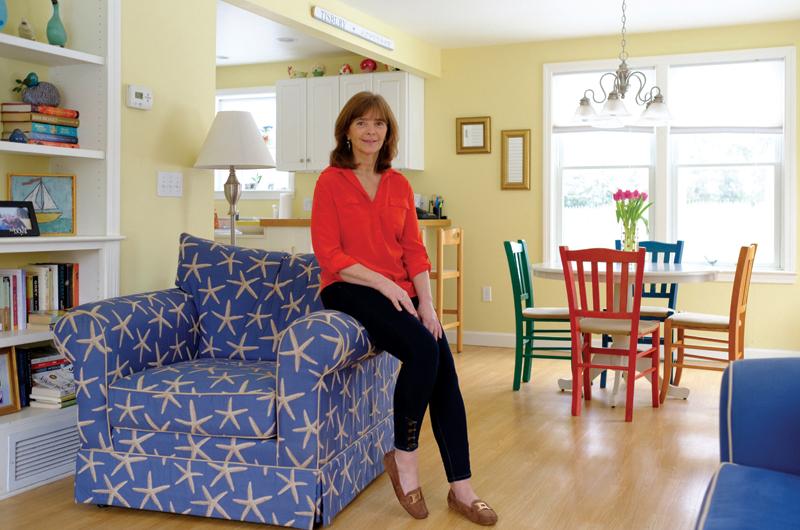Islanders know what a president’s stamp of approval can do, and when Jimmy Carter and his wife, Rosalynn, joined Habitat for Humanity International in the mid-1980s, virtually overnight the organization’s brand ignited attention and support. With a history dating back to the 1950s and the civil rights era, Habitat was officially established in 1976 and became the largest private homebuilder in the United States by 2009. While Carter may not have raised a hammer on the ten homes the Martha’s Vineyard affiliate of Habitat has contributed to the Island’s housing stock, the organization retains its missionary flavor.
Homeowners must invest 350 hours of their own “sweat equity” during construction, and Habitat purposely seeks to serve the lower portion of those seeking home security, including those bordering on homelessness. Habitat families must be at or below 80 percent AMI – the area median income – which is lower than most housing programs. For a family of four, that’s a maximum income of $65,700.
“We’re addressing a totally different community,” says local board chairman Ewell Hopkins. “We set a mortgage based on their ability to pay and based on their income. It is truly a ministry when you understand the international model of Habitat.”
The Vineyard chapter formed in 1996, and signed on officially in 1998, with the first house constructed in 2001 for less than $50,000. Like Habitat construction everywhere in the world, the cost is dramatically reduced thanks to volunteer tradesmen, suppliers, and contractors who donate materials, from full kitchens to windows, roofing, and framing. Hammers indeed do fly.

Doug Best of D. Best Construction has been involved for a dozen years. It began when one of his daughter’s Montessori teachers was chosen for a Habitat house. “I knew of her needs and the opportunity she had, and I gladly jumped on board and finished the house,” he says.
Since then, Best and his crew have been donating everything they can, including doors, kitchen cabinets, and granite countertops. “Lots of times it’s a client who’s renovating or changes their mind about a window size or style, and they’re happy to donate those items rather than sell them or put them out on the street corner.” In turn, Habitat will either use the donations or sell them to benefit the next housing project.
There are more than 1,400 U.S. affiliates with the direction and scope set by each community. “On Martha’s Vineyard or Aspen, there’s an affordability crisis,” says Mark Andrews, the vice president of volunteer and institutional engagement for Habitat for Humanity International. “In rural Virginia, it’s a poverty crisis.”
Nonetheless, Andrews says the issue of affordability is spreading. “We’re seeing wage earners with no place to live. The issue of affordability is becoming a challenge for us and we’ve moved from purely new housing construction to looking for ways to build out existing housing, to make renovation and repairs. The problem is, in a place like Martha’s Vineyard, marginal housing stock is usually bought up by developers.”
Habitat homes are deed restricted, with the organization acting as the bank and mortgage lender. A homeowner can cash out and pull out the equity, but there’s a formula in place that keeps the house affordable for the next chosen family.
Increasingly, there is pressure, Andrews says, to raise Habitat’s income level, because homeowners receive a no-interest mortgage loan. “Our hope is to stay significantly below the median income, but that, too, is becoming a real challenge in communities,” he notes.
On the Vineyard, the pace of construction or renovation is deliberate. “We will not build a home until we have all the money necessary,” says Hopkins. “We now own multiple properties and we’re prepared to build, but we won’t build until we see a commitment from the community – until we have enough skilled tradesmen and builders willing to commit.”
Still, the next Habitat home for Dukes County is in the works, with homeowner applications accepted through March 2017. And donations, whether construction grit or materials, are always welcome.
To Chris Rasmussen, who moved into a Habitat home with her three sons nearly nine years ago, the journey from selection to ownership was “very cool.” A nearly two-year lapse before building enabled her family to participate broadly, from stuffing envelopes for appeals to marching with Habitat in the Fourth of July parade.
“It was just one of those unforgettable experiences,” she says today. “The generosity of the community, the people who gave their time or supplies or showed up to help, it was just amazing.”



 3 comments
3 comments
Comments (3)